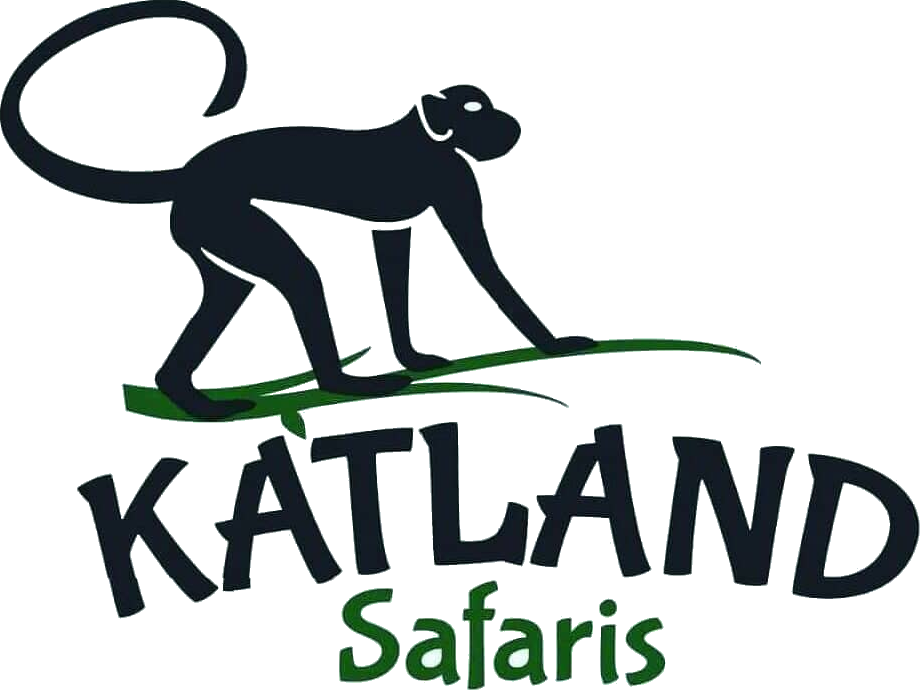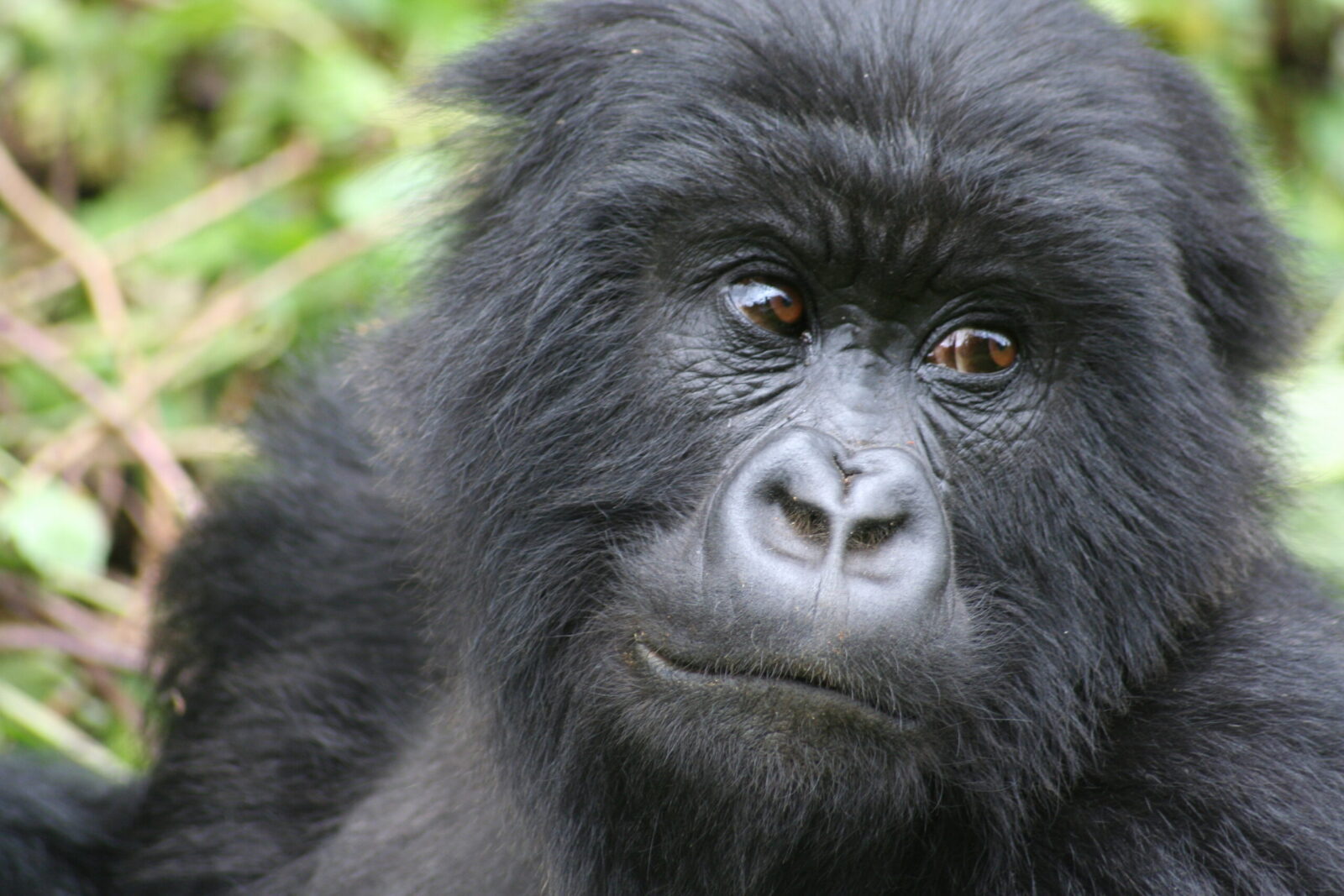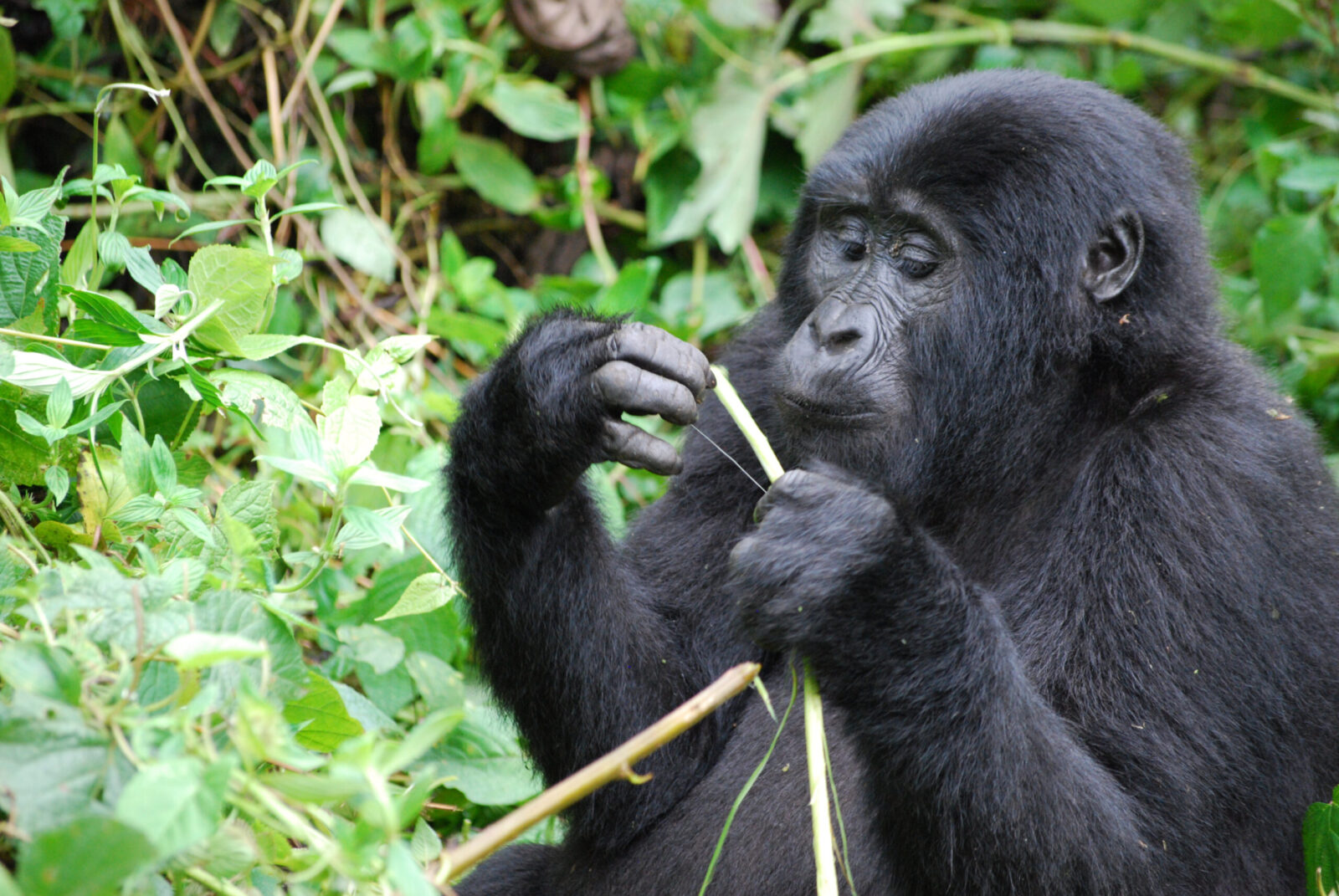Gorilla groups in Bwindi – Mountain Gorilla Families of Uganda – The Habituated Gorilla Groups – Habituated Gorilla Groups of Uganda
Gorilla groups in Bwindi. With slightly over 1006 mountain gorillas remaining in the world according to the Uganda Wildlife Authority (2018) is home two more than half of the world’s total gorilla population with the majority of these living within the different sectors of the Bwindi Impenetrable Forest National Park a renowned world heritage site as well as the Mgahinga National Park found in the far southwestern corner of Uganda.
For each gorilla family, a maximum of eight (8) gorilla permits are offered for gorilla trekking an experience during which tourists get a chance to visit these amazing hairy forest Giants in their natural habitat. Because mountain gorillas do not stay in the same place for more than one night and move to new places each day, during the gorilla trekking safari experience you will have to walk through the forests for 2 to 44 hours searching for them.
Gorilla groups to trekk while on a Safari to Bwindi impenetrable forest in Uganda
Nshongi Gorilla Family
This group was first sighted close to River Nshongi after which it was named. In 2009 in September it was opened for tourism with a total of thirty-six (36) individuals which made it the biggest habituated gorillas group in Uganda. This large gorilla family had three (3) silverbacks and a total of seven (7) blackbacks that lived in harmony without making any attempts to lead. In July 2010 this group split into two with a group of 10 members led by silverback Mishaya leaving.
Mishaya Gorilla Family
In July 2010 this group separated from the huge Nshongi group led by silverback Mishaya. Due to his fighting character, he conquered several other gorilla families and over the years managed to increase in number. Sadly in 2011 in April he encountered a wild gorilla family that wasn’t habituated and got several injuries together with one of the infants in his group who was just two-year-old. Fortunately, these were treated and recovered well by the Mountain Gorilla Veterinary Project veterinaries.
Kahungye Gorilla Family
This is among the most recently habituated family of gorillas found within the Bwindi Impenetrable Forest National Park and comprises twenty-seven individuals among which were three silverbacks. In October, 2011, it was opened for tourism and about one year later this gorilla family split to form the Busingye gorilla family. Today dominant silverback Gwigi whose name means ‘door’ leads this active group.
Bweza Gorilla Family
In 2009 in September the largest group to ever be habituated in Bwindi National Park – the Nshongi was opened for tourism however silverback Mishaya slip from the family to form his group the Mishaya gorilla family in July 2010. But just two years down the road after its formation, silverback Bweza decided to leave the group forming the Bweza family and in December 2012 the gorilla family was opened to tourism.
Busingye Gorilla Family
In June 2012 silverback Busingye split from the Kahungye gorilla family to form his own. The dominant silverback Busingye whose name means ‘peace’ on the contrary loves fighting and, on several occasions, has fought off wild gorilla groups that have attacked him and grabbed females and added them to his own gorilla family.
Gorilla Groups Found In Bwindi Impenetrable National Game Park.
Mubare Gorilla family
In 1993 the Mubare gorilla family was opened for tourism activities which makes it the oldest habituated mountain gorilla family in the whole of Uganda. This family was first seen on Mubare Hill found in the depth of the Bwindi impenetrable forest and it was after this that it was named. According to the trackers who first spotted this group comprised eighteen 18 individuals with Ruhondeza as the dominant male silverback. The leadership of Silverback Ruhondeza was challenged in March 2012 when a wild gorilla group attacked his family and left with a couple of females. The defeated Ruhondeza had at the time grown old and weaker and fled to the neighboring community Forest where he took refuge. Nonetheless, the wildlife researchers of Bwindi national park continued to monitor his progress until on the 27th of June 2020 he sadly died in his sleep. This dignified silverback who was said to be more than 50 years old was buried close to the park headquarters offices and his gravestone can be seen today. This silverback was well known as a gentle-mannered yet lazy leader a character well depicted by his name which means ‘sleepy fellow’.
Habinyanja Gorilla Family
First opened for tourism in 1999, the Habinyanja gorilla family habituation process began in 1997. this group was first sighted close to a swamp within the impenetrable forest of Bwindi National Park and it’s from this that its name Habinyanja which was derived from ‘Nyanja’ a local word in the Rukiga language that means ‘a place with water’. Mugurisi a word that means ‘old man’ was the name for the dominant silverback that was leading this group at the time when it was discovered. Unfortunately, he died due to old age and his two brothers Mwirima and Rwansigazi took on the leadership of this gorilla family. Because of the differences in their nature, this joint leadership did not last long as Rwansigazi loved moving a lot due to his adventurous nature while his brother Mwirima preferred covering a small range. This indifference among others led to the two brothers parting ways in a surprisingly very peaceful way that did not involve any fights. The group that remained with Mwirima was called the Rushegura family while the one that left with Rwansigazi retained the name Habinyanja. Today the Habinyanja gorilla family is laid by silverback Makara who took over leadership from Rwansigazi. From time to time these groups have been seen to come across each other and they peacefully exist. in 2011 in June the very social and friendly blackback Mizano was discovered dead with several spear wounds around his neck and shoulders and it said that some porches who were with dogs attacked this group. This unfortunate incident was recorded as the first scene ever since 1995 where a gorilla was killed by poachers.
Rushegura gorilla family
This group separated from the bigger Habinyanja family and the separation happened in 2002 at a place called Rushegura after which it was named. At the time of separation, the dominant silverback Mwirima left with twelve individuals among which were five females. By 2010 the family had increased in number to a total of nineteen individuals. Over the years, silverback Mwirima had been devoted to protecting his family and fought several attacks by wild gorilla groups. Previously this family would cross into the democratic republic of Congo which shares a border with the Bwindi NP, board however it eventually settled and made permanent residence in the Bwindi National Park. Fortunately, this group is very calm and has harmoniously lived with the people of the nearby village, and on several times, it has been observed visiting the gardens of Gorilla Forest camp.
Gorilla Groups In Bwindi Impenetrable National Game Park.
Nkuringo Gorilla Family
In the local Rukiga language, the name Nkuringo means a ‘round hill’ and it is on a round hill that this group was first seen. This family tended to move to the lower slopes into the Village communities nearby where it turned out to be problematic to the people as it would eat farm produce such as sweet potatoes, bananas, and other crops. Because of the numerous complaints from the local people, this group was eventually habituated to tourism in order to protect it as well as enable the local people to gain from revenue acquired from gorilla tourism. At the time of habituation, this group was led by silverback Nkuringo who at the time was old and weary. After his passing in 2008 in April two silverbacks Rafiki and safari remained in the family however leadership shifted to his son Safari. An adult female Kwitonda not long after gave birth to twins Muhozi and katungi however the latter died after succumbing to an illness at the age of one-and-a-half years
Bitukura Gorilla Family
This gorilla group was first seen close to River Bitukura after which it was named. It was opened for tourism in October 2008 after a habituation process starting in July 2007. unique about this gorilla family is that, unlike another group whose habituation process takes two years, it only took 15 months to get it fully habituated and fit for tourism. This uniqueness is believed to have been caused by the close bond between the Bitukura family and the Kyaguriro family. Previously it comprised 24 members but as the years went by, they reduced to just 14 members with a number of them joining other families.
Oruzogo Gorilla Family
Led by silverback Tibirikwata this gorilla family was opened to tourism in 2011 and over the years it has increased in number thanks to the various births within the family. In June 2011 Ntamurungi a female adult gave birth and later that very year in October Musi another adult female gave birth as well. In 2012 in March, Kakoba another adult female give birth to twins a thing that brought tremendous joy to the gorilla family
Contact us with any inquiries about booking a gorilla safari to trek any of the above gorilla groups in Bwindi.



